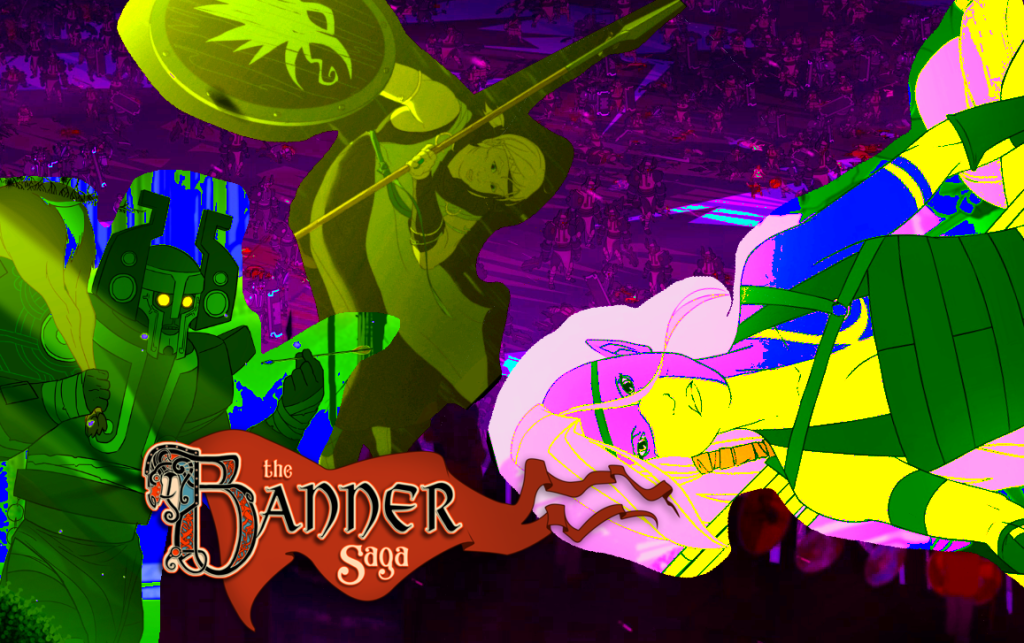The Banner Saga is, first and foremost, a narrative game. Turn-based tactics and resource management are indeed essential aspects of the game—but its heart and the most precious value lie in its narrative. And by The Banner Saga, I mean all three games in the series—more or less successful attempts to enliven and deepen tactical mechanics along the way can’t make me change my mind. The Banner Saga is one long epic adventure, separated into three parts for ease of digestion.
Inspired by Norse mythology, the world of The Banner Saga is seemingly dying—its sun stands still, and metallic monsters called Dredge invade peaceful villages. It’s just the very beginning of the story, but the situation is already grim and dire—it’s going to get only worse from here. Don’t worry: textual analysis is not in the scope of such a short blog post, so no spoilers are expected. I’ll say just one thing.







I doubt my screenwriting teacher ever played The Banner Saga, but he would definitely like it. He always said that the best scripts don’t pity their heroes—the best drama happens when you put characters in horrible need and then make it even worse. The Banner Saga agrees with this wholeheartedly—initially grimdark setting gets darker with every new numerable next to the word Saga in the title. Get ready to feel the burdensome tiredness of keeping the last hope alive during the constant survival in harsh circumstances. It works, and it works marvelously.
But when I mean that a narrative is the game’s heart, it’s not because of its quality. It’s because a narrative is the core gameplay mechanic. Most of your decisions are made while climbing the branching twines of the story, and most of the consequences are preplanned by the writers. The Banner Saga’s disasters have an intricate but manufactured structure, as opposed to the chaotic unpredictability of, say, X-COM.
It’s not a bad thing, of course, especially because The Banner Saga, as said above, excels at its narrative. But what about tactics? They are pretty good. While the original game can feel somewhat basic in this aspect, the following evolution of the series goes in the right direction, adding enough depth and variety to the mechanics.









I dig the main tactical gimmick of The Banner Saga’s mechanic—each unit has strength and armor, while strength is simultaneously HP. So you constantly have to choose whether shutter the enemy’s armor for the future or try to minimize the potential damage they will inflict. Carelessness in battle may quickly deteriorate your shaky stand, and you’ll find your strongest units gravely hurt and basically useless.
The Banner Saga 2 and 3 have a Survival Mode that seems to be intended to prolong the tactical longevity of the series. I don’t really see myself playing it because while the battle mechanics are decent, they aren’t strong enough to keep me interested without a good story around.
Oh, and I must mention the stellar visuals of The Banner Saga. Inspired by the art of Ralph Bakshi and Disney films from the 50s, the style fits perfectly with the rest of the ingredients. Marvelous music completes the perfection—The Banner Saga, as the sum of all its parts, is a monumental epic fantasy.
I highly recommend experiencing The Banner Saga trilogy as a whole. When I finished it, I felt this peculiar mix of lassitude and contentment that you feel after finishing reading The Lord of the Rings or experiencing four days at the opera, surviving The Ring of the Nibelung. It smites!






